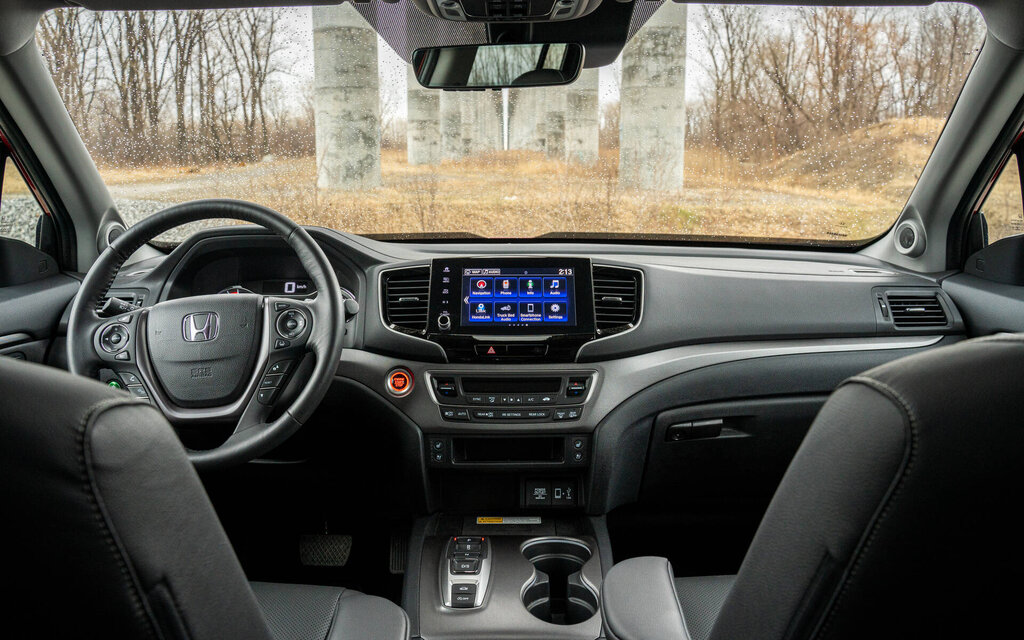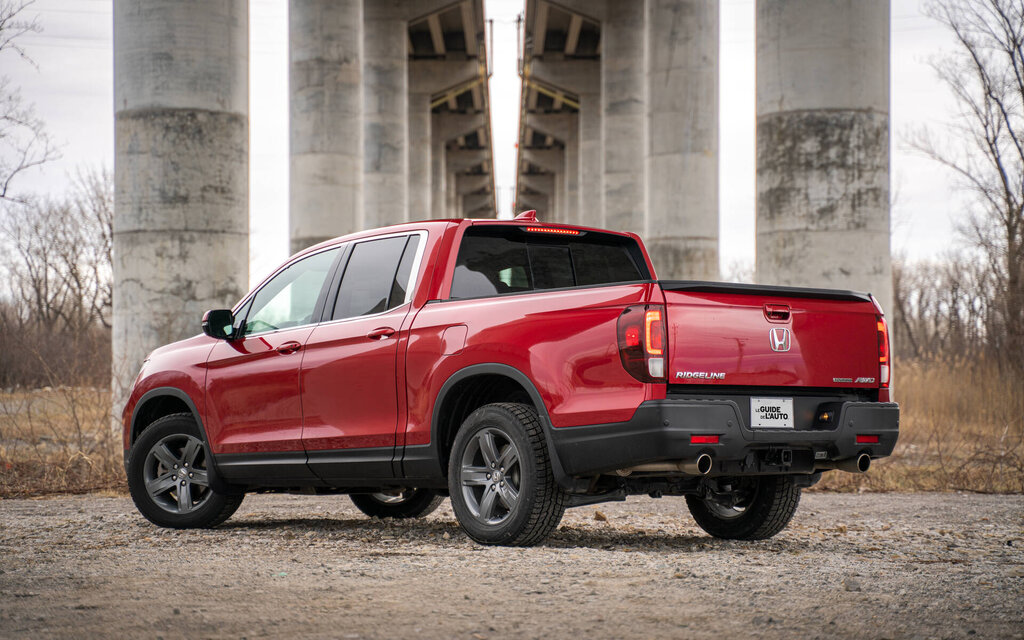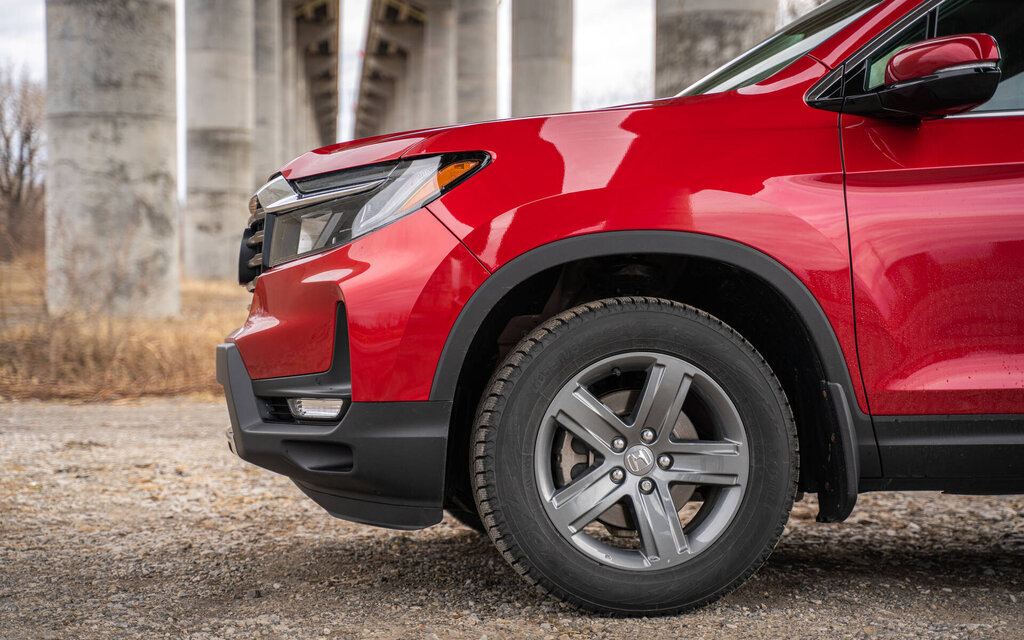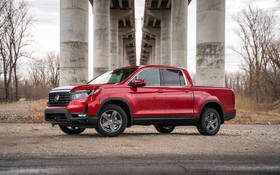2022 Honda Ridgeline: Versatile But Dated

| Strong points |
|
|---|---|
| Weak points |
|
The Honda Ridgeline is one year removed from a series of cosmetic revisions that included a more sculpted hood, larger grille and redesigned fenders up front, plus a new-look rear bumper emphasizing the dual tailpipes. All models ride on 18-inch wheels and benefit from a 20mm wider track.
For 2022, the Ridgeline is available in four trim levels—Sport, EX-L, Touring and Black Edition—with prices ranging from $48,505-$57,505. This includes freight and PDI, by the way. Our Touring tester retailed for $55,705.
- Also: What's the Best Pre-Owned Pickup Under $20,000?
- Also: The Car Guide's Best Buys for 2022: Honda Ridgeline
Spacious and Comfortable
Unlike several competitors such as the Toyota Tacoma, Chevrolet Colorado, GMC Canyon, Nissan Frontier and Ford Ranger, the Honda Ridgeline is a unibody pickup instead of the body-on-frame type. Consequently, it delivers SUV-like handling and a smooth ride, helped by a comfort-tuned suspension.

The cabin is spacious both front and rear. The seats provide adequate support especially for the thighs, while the driving position is optimized by a tilt/telescoping steering wheel. Large windows ensure good visibility.
Steering is precise, but as is the case with many vehicles nowadays, the steering wheel is littered with buttons, most of which are not ergonomically arranged.
The instrument cluster combines a pair of analogue gauges and a 4.2-inch digital display. While user-friendly, it just looks dated. Same thing for the infotainment system. Also, the touchscreen is positioned out of the average driver’s reach, making it more difficult to use. The navigation system is slow and displays poor graphics.

On the plus side, the available 540W eight-speaker stereo delivers quality sound. Apple CarPlay and Android Auto compatibility is included.
Motivation for the Honda Ridgeline comes from a 3.5L i-VTEC V6 engine that produces 280 hp and 262 lb-ft. of torque. The nine-speed automatic transmission does a good job overall, and the Intelligent Variable Torque Management all-wheel drive system comes standard.
With temperatures hovering around the freezing point, we achieved a combined 11.2 L/100 km. That’s three tenths of a litre better than the official rating posted by Natural Resources Canada.

Practical, But…
As you probably know, the Ridgeline stands out from the competition with a versatile cargo bed that features several tie-downs, a 207L lockable compartment under the floor and a trick tailgate that can swing open sideways in addition to the conventional drop-down motion.
The bed is 1,625 mm (5.3 ft.) long, 1,270 mm (4.17 ft.) wide and 425 mm (1.4 ft.) deep. Depending on the trim level, payload ranges from 674-694 kg.

Towing capacity is limited at 5,000 lbs (2,267 kg) whereas every other midsize pickup on the market can pull more than 6,000 lbs. Some even surpass 7,000 lbs.
Plenty of Safety Tech
Keeping up with the rest of the industry, the 2022 Honda Ridgeline incorporates a suite of active and passive safety features. With Honda Sensing, you get adaptive cruise control, blind spot monitoring, lane keeping assist and rear cross traffic alert as standard. Automatic emergency braking, trailer stability assist and much more are included, too.

Ultimately, the Ridgeline combines the comfort of an SUV with the versatility of a pickup, but its many desirable attributes are spoiled by dated in-car technology, questionable cabin design and limited towing capability. It’s still a good purchase, but one few traditional pickup customers are willing to make.











